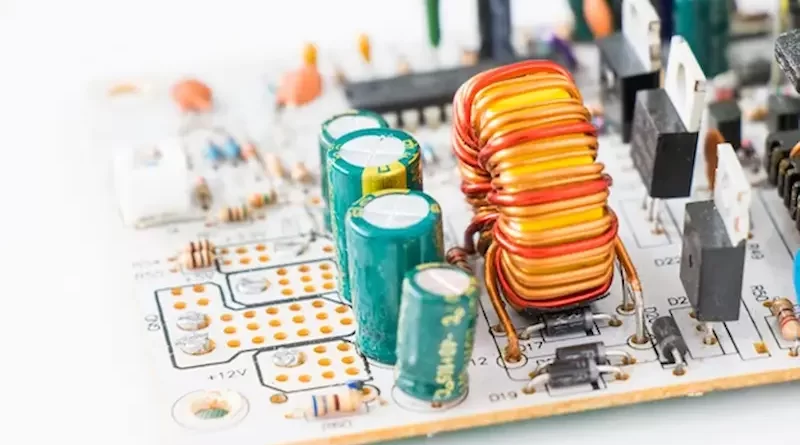Understanding Transistors: The Brains of Modern Electronics
When we think about the rapid advancement of technology over the years, one word comes to mind: transistors. These tiny but mighty devices serve as the building blocks of modern electronics. In this article, we’ll delve into the fascinating world of transistors, explaining what they are and how they work. So, let’s embark on a journey to demystify the heart of your electronic gadgets.
What is a Transistor?
A transistor is an essential component in the realm of electronic circuits. It is a semiconductor device that regulates the flow of electrical current. Essentially, transistors act as tiny switches that can be turned on or off to control the flow of electricity in a circuit. They are the unsung heroes behind the scenes, making your electronic devices function as they should.
Types of Transistors
Transistors come in various types, each with its unique characteristics. The most common types are:
- Bipolar Junction Transistor (BJT): BJTs are one of the earliest types of transistors. They come in two variants: NPN (negative-positive-negative) and PNP (positive-negative-positive). BJTs are used for both amplification and switching applications.
- Field-Effect Transistor (FET): FETs operate by controlling the flow of current through an electric field. They are divided into two main categories: Metal-Oxide-Semiconductor FETs (MOSFETs) and Junction Field-Effect Transistors (JFETs).
- MOSFETs: Metal-oxide-semiconductor field-effect Transistors are commonly used in integrated circuits (ICs). They are known for their high switching speed and efficiency.
- JFETs: Junction Field-Effect Transistors are often used in low-noise, high-impedance amplifier applications.
How Does a Transistor Work?
Transistors operate on the principle of amplification and switching. To understand their functionality better, let’s break it down step by step:
- Basic Structure: A transistor consists of three layers of semiconductor material. These layers are typically named the emitter, base, and collector. In a BJT, the layers are made of either silicon or germanium.
- Voltage Applied: When a voltage is applied between the base and emitter in a BJT, it generates an electric current in the base.
- Electron Flow: This current in the base allows electrons to flow from the emitter to the collector, or in the case of a PNP transistor, from the collector to the emitter. The key is that this flow of electrons is controlled by the voltage applied to the base.
- Amplification: Transistors amplify signals. By allowing a small current to control a larger current flow, they act as signal amplifiers. This property is fundamental to their use in audio amplifiers, radios, and a myriad of other electronic devices.
- Switching: Transistors can also be used as switches. By manipulating the voltage at the base, they can be turned on (allowing current to flow) or turned off (blocking current flow). This characteristic is invaluable in digital logic circuits where binary signals (0 and 1) are employed.
Applications of Transistors in Integrated Circuits
Now that we have a grasp of how transistors function let’s explore their prominent role in integrated circuits (ICs).
- Logic Gates: ICs often contain complex logic gates made up of transistors. These gates perform logical operations that are the foundation of digital electronics. The ability to switch between two states (0 and 1) forms the basis for all digital computation.
- Microprocessors: Microprocessors are the brains of computers and many other devices. They consist of millions or even billions of transistors etched onto a tiny silicon chip. These transistors work in harmony to process data, execute instructions, and perform various tasks.
- Memory Chips: ICs used for memory storage, like RAM and ROM, employ transistors to store and retrieve data. The binary system of transistors representing 0s and 1s is what underpins all digital data storage.
- Amplifiers: ICs designed for amplification purposes contain numerous transistors. These amplifiers are used in everything from audio devices to wireless communication systems.
The Future of Transistors
As technology continues to advance, the world of transistors and electronic parts supplier such as IC Chips are not standing still. Engineers and scientists are continually pushing the boundaries of what transistors can do. Some developments on the horizon include:
- Quantum Computing: Researchers are exploring the use of quantum bits or qubits, which rely on quantum transistors for processing. Quantum computers have the potential to revolutionize data processing with unimaginable speeds.
- Nanotechnology: The miniaturization of transistors is an ongoing trend. As transistors become smaller, they consume less power and allow for even more compact and powerful electronic devices.
Conclusion
In conclusion, transistors are the unsung heroes of modern electronics, working silently to make our gadgets function seamlessly. Whether amplifying signals, processing data in microprocessors, or storing information in memory chips, transistors are at the core of it all. Their role in integrated circuits is indispensable, and they continue to evolve to meet the demands of an ever-advancing technological landscape.

